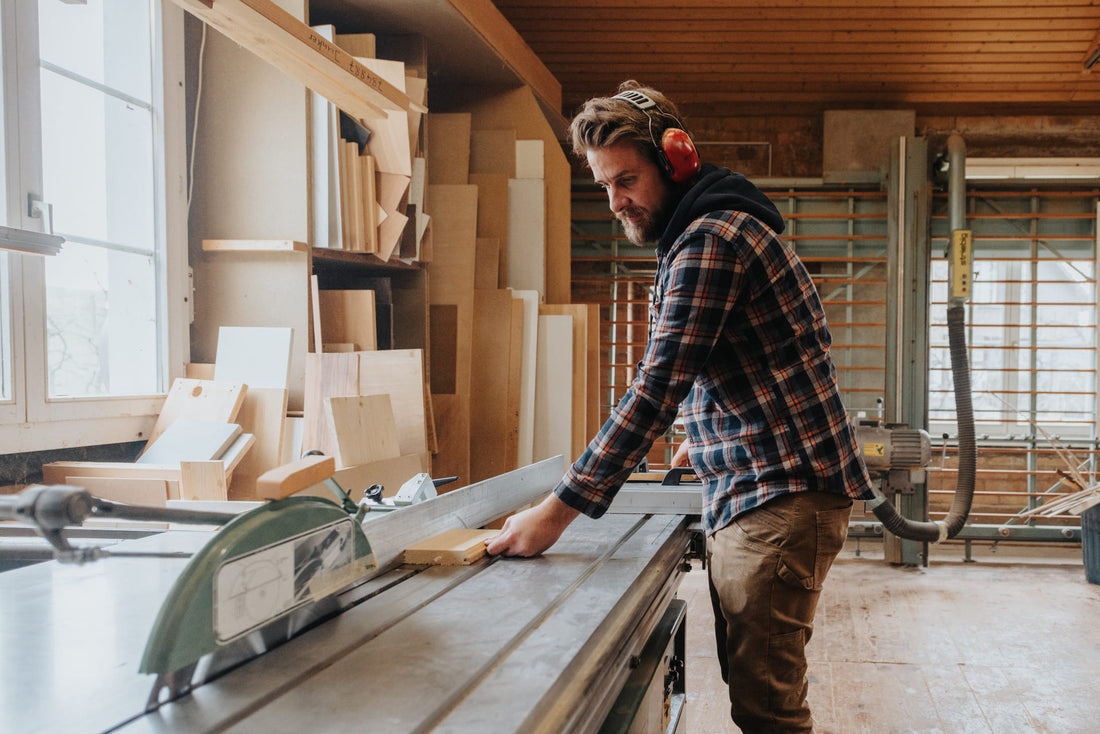Lightweight panel – Everything you need to know

Lightweight panels are revolutionizing the modern construction and furniture industries. These versatile materials are both light and strong, offering numerous application possibilities. This page aims to provide you with a comprehensive overview and answer the most frequently asked questions about lightweight panels.
What is a lightweight panel?
A lightweight panel is a composite panel consisting of a lightweight core material and facing sheets on both sides. The core can be made of materials such as honeycomb structures, foam, or other lightweight materials, while the facing sheets are often made of wood, melamine, or even metal. However, in this context, we will only refer to those made of wood or melamine.
Why use lightweight panels?
Advantages at a glance:
- Weight saving : Ideal for transport and assembly, also reduces transport costs.
- Stability : Thanks to their composite structure, they achieve high load-bearing capacity and are ideal for structural applications.
- Easy processing : They can be cut, drilled and assembled using standard tools, saving time and money.
Where are lightweight panels used?
Lightweight panels are extremely versatile. They are used in furniture making, interior design, trade fair construction, aerospace, boatbuilding and even the automotive industry.
How are lightweight panels manufactured?
The production of lightweight panels involves several steps. First, the core material is selected and cut to size. Then, the outer layers are bonded to the core material and pressed together under pressure. The adhesive is then cured to create a strong bond. Some panels are subsequently further processed or coated.
How are lightweight panels processed?
Working with lightweight panels is very easy.
First, cut your lightweight panel to the desired size. Ideally, use a table saw for this. A circular saw or jigsaw will do the job just as well, though with a bit more precision. Just make sure you're using the right blade!
You can attach lightweight panels in any standard way. Whether nailed, screwed, stapled, or attached with special adhesives wherever you want is entirely up to you and your project plans.
How much do lightweight panels cost?
Costs can vary, starting at around €30 per square meter for basic options, up to over €200 for specialized or high-quality panels. Additional costs may apply for special surface treatments or higher material quality.
Frequently Asked Questions (FAQ)
Are lightweight panels waterproof?
Water resistance depends on the material used and any coatings. Special waterproof versions are available.
How durable are lightweight panels?
This depends on the type of board and its thickness, as well as the quality of the core material and the cover layers.
Can I cut lightweight panels myself?
Yes, with the right tools and some manual dexterity, this is certainly possible.
Are lightweight panels fireproof?
Some panels are fire-resistant or can be made fireproof with special coatings. When choosing, be sure to pay attention to the correct certifications regarding fire resistance and durability.
Conclusion
Lightweight panels are an excellent choice for a wide range of applications. They offer a superb combination of lightness, stability, and versatility, making them attractive to both professionals and DIY enthusiasts. Want to take a look at some lightweight panels right now? Click through to our shop .




